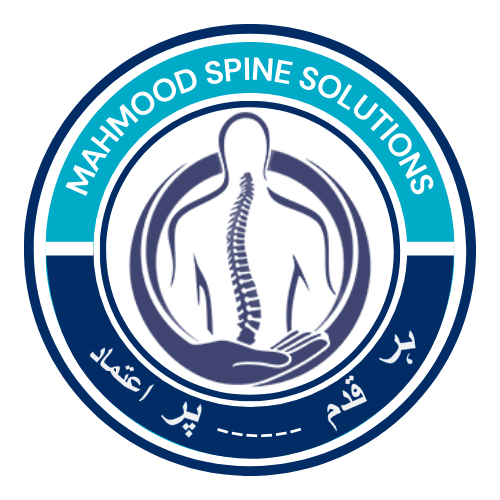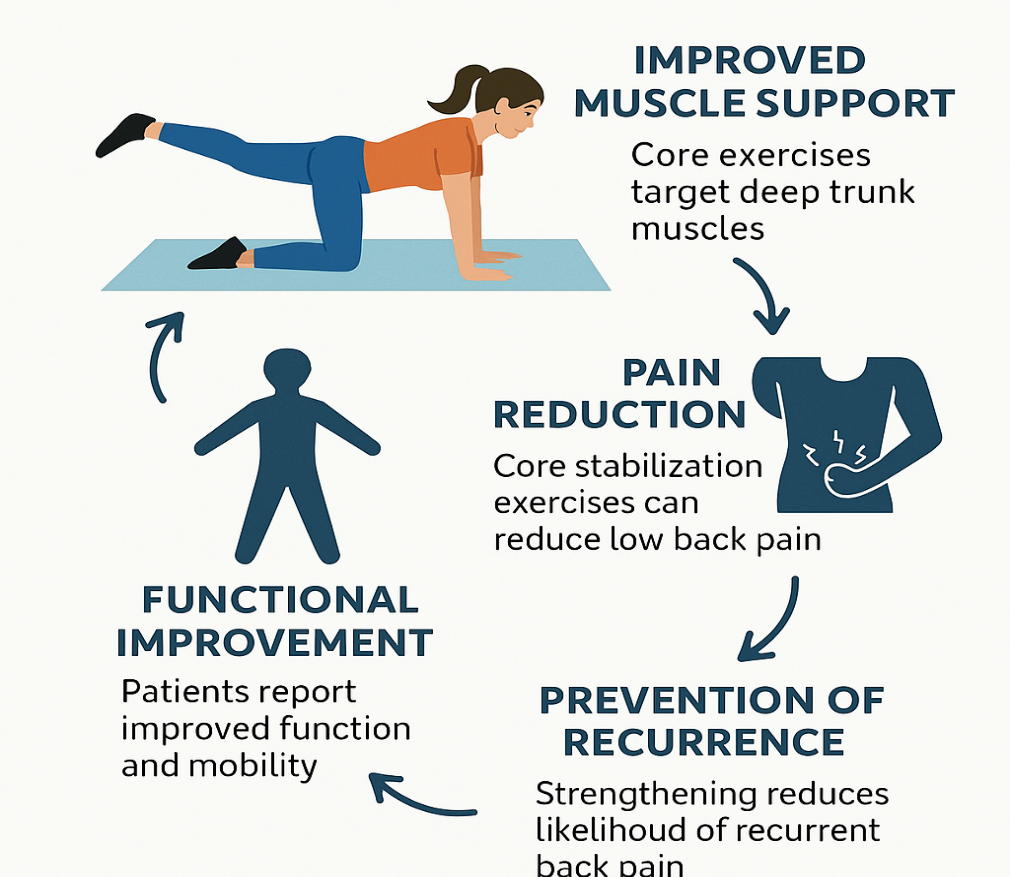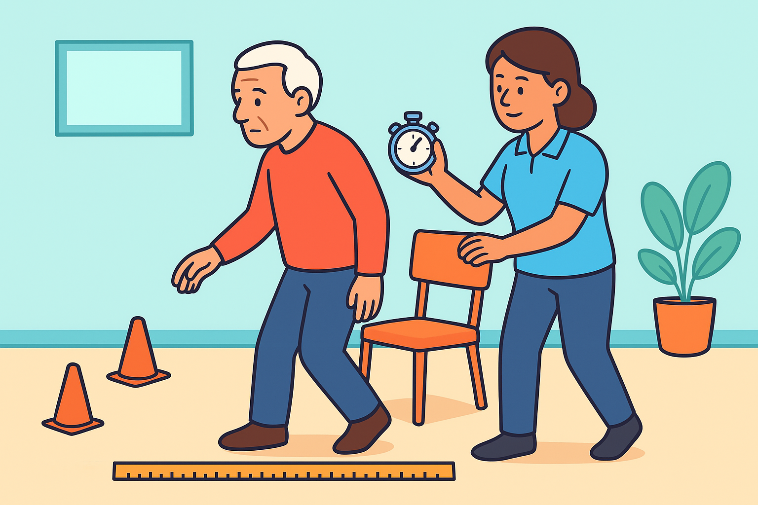Low back pain (LBP) is a prevalent musculoskeletal disorder affecting a significant portion of the global population. It is a leading cause of disability, work absenteeism, and reduced quality of life. One of the conservative management strategies that has gained considerable attention in recent years is core strengthening exercises. This intervention aims to enhance the strength, endurance, and coordination of the muscles that support the spine and pelvis, thereby reducing pain and improving functional ability.
Understanding Core Stability:
Core stability refers to the ability of the muscles of the abdomen, back, pelvis, and hips to work in harmony to maintain proper posture and spinal alignment during movement. Key muscles involved in core stability include:
- Transversus abdominis
- Multifidus
- Pelvic floor muscles
- Diaphragm
- Erector spinae
- Gluteal muscles
When these muscles are weak or poorly coordinated, spinal structures become more vulnerable to injury and strain, potentially leading to or exacerbating LBP.
Mechanism of Action:
Core strengthening exercises work by:
Increasing spinal stability during static and dynamic activities.
Enhancing neuromuscular control, which is often impaired in individuals with chronic LBP.
Reducing mechanical stress on spinal structures by promoting proper alignment.
Improving posture and functional movement patterns can prevent further injury.
Evidence from Research:
Multiple clinical trials and systematic reviews support the effectiveness of core strengthening in the management of LBP:
- A systematic review by Wang et al. (2012) found that patients with chronic LBP who participated in core stability exercises reported significantly greater reductions in pain and disability compared to those engaging in general exercise.
- Akuthota and Nadler (2004) noted that strengthening the core musculature enhances spinal stabilization and can decrease the incidence and recurrence of LBP.
- A 2015 meta-analysis published in the Journal of Physical Therapy Science concluded that core stability training is more effective than general exercise for improving pain and functional outcomes in individuals with chronic LBP.
Benefits of Core Strengthening for LBP:
Pain Reduction: Activation and strengthening of deep trunk muscles reduce pain by stabilizing spinal joints and reducing inflammation caused by instability.
Functional Improvement: Enhanced core strength supports daily activities and reduces limitations associated with LBP.
Injury Prevention: A strong core contributes to better movement efficiency and reduces the likelihood of recurrent LBP.
Postural Correction: Improves alignment and reduces compensatory movements that may cause further strain.
Recommended Core Exercises for LBP:
Examples of commonly prescribed core exercises include:
Bird-Dog: Promotes spinal stability and coordination.
Pelvic Tilts: Strengthens the lower abdominal muscles.
Dead Bug: Engages the deep core without straining the spine.
Glute Bridges: Activates the glutes and stabilizes the pelvis.
Side Planks: Targets the oblique muscles and improves lateral stability.
McGill Big Three: A protocol developed by Dr. Stuart McGill focusing on safe and effective spine stabilization.
These exercises should be performed with proper technique and under professional supervision, particularly in the early stages of rehabilitation.
Limitations and Considerations:
- Core strengthening may not be effective in isolation for all individuals; a multimodal approach including manual therapy, education, and lifestyle modifications may be necessary.
- Individualized programs tailored to the patient’s condition, fitness level, and goals are more effective than generalized routines.
- Poor exercise technique can worsen symptoms; therefore, supervision by a qualified physiotherapist is recommended.
Conclusion:
Core strengthening exercises are a clinically supported and non-invasive intervention for the management of low back pain. They enhance spinal stability, reduce pain, improve function, and contribute to long-term prevention of recurrence. Incorporating core stabilization into a comprehensive rehabilitation plan provides significant benefits for individuals suffering from both acute and chronic LBP.
About Authors
Dr. Muhammad Mahmood Ahmad is a Spinal as well as an Orthopedic Surgeon with over 14 years of experience currently practicing at Razia Saeed Hospital, Multan.








